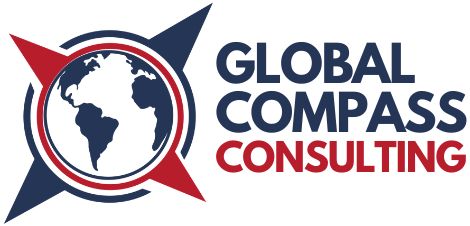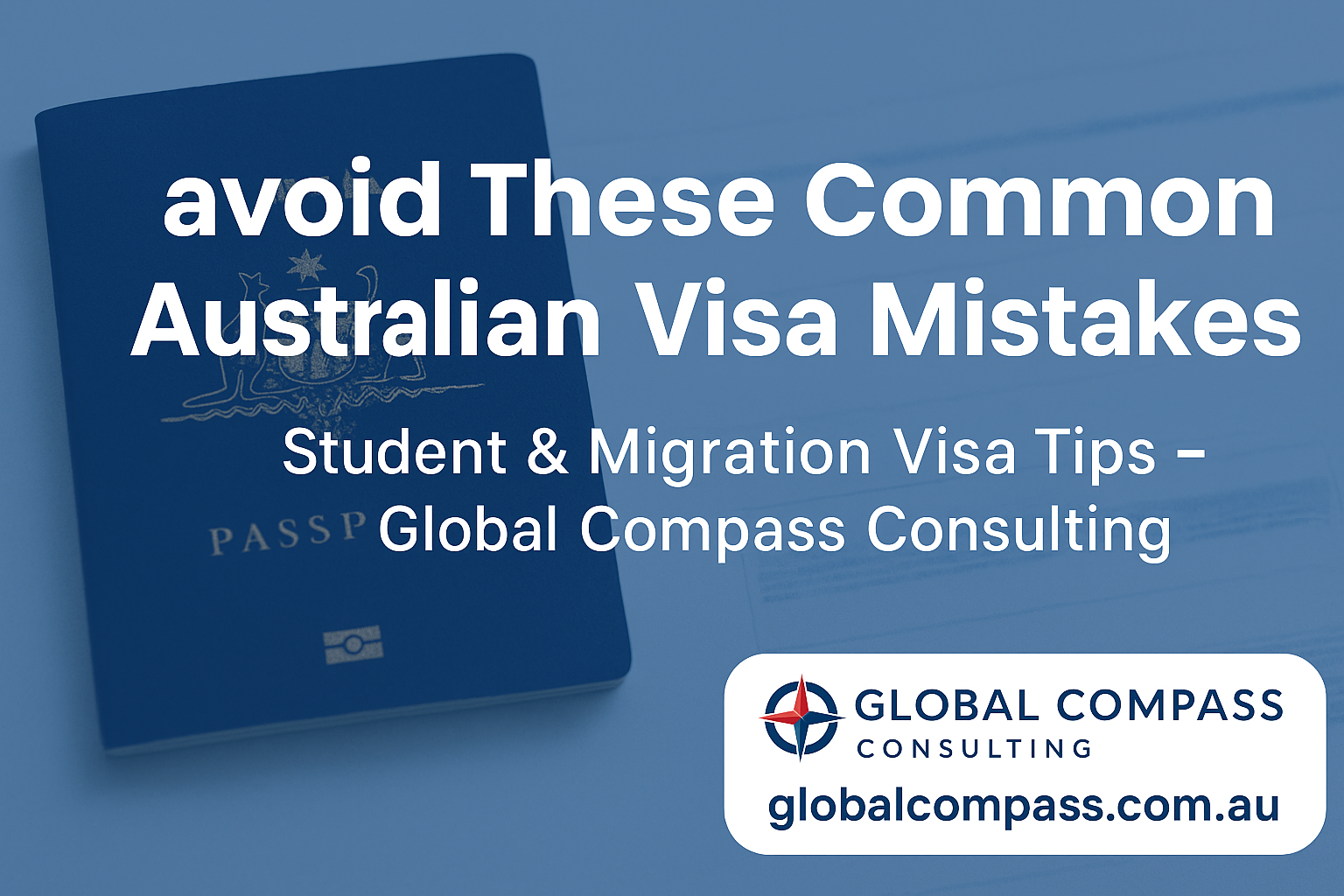Applying for an Australian visa is an exciting but sometimes stressful process. Whether you are planning to study in Australia, migrate for work, or apply for permanent residency, the visa application process can be complicated. Every year, thousands of applications face delays or even refusals, not because the applicants are ineligible, but because of simple mistakes that could have been avoided.
At Global Compass Consulting, we work with students and professionals every day and have seen the same errors repeated. In this article, we’ll walk you through the most common mistakes people make when applying for an Australian visa-and more importantly, how you can avoid them.
Submitting Incomplete or Incorrect Documents
One of the main reasons visa applications get delayed or refused is that the documents are missing or incorrect. This could be as simple as forgetting to upload a financial statement, sending an old passport copy, or submitting blurry, uncertified documents.
How to avoid it: Always check the Department of Home Affairs checklist for your visa type and make sure every document is updated and clear. Having an experienced consultant review your file can also save you from costly errors.
Providing False or Misleading Information
Some applicants think that hiding certain details or presenting false information will make their application stronger. In reality, this is one of the fastest ways to get refused and could even affect your chance of applying in the future.
How to avoid it: Be truthful about your background, work experience, financial situation, and any previous visa refusals. Honesty is always better than risk.
Not Meeting English Language Requirements
Most Australian visas, especially student and skilled migration visas, require proof of English language skills. Many applicants fail because they either submit expired IELTS or PTE results, or they do not meet the score required for their visa category.
How to avoid it: Prepare early for your English test and confirm that your score matches your visa requirement. Remember that most test results are valid for only two years.
Weak Financial Proof
The Australian government wants to ensure that applicants can afford tuition fees, living costs, and other expenses. A lot of refusals happen because applicants provide weak financial proof, unclear sponsor details, or sudden large deposits in their accounts.
How to avoid it: Submit genuine bank statements with a proper transaction history. If you have a sponsor, provide clear supporting documents that show the relationship and financial capacity.
Ignoring the Genuine Temporary Entrant (GTE) Requirement
For student visas, the GTE statement is a critical document. Many students make the mistake of submitting a generic letter copied from the internet or failing to show their real motivation for studying in Australia. Immigration officers want to see your true intention and whether you plan to return home after your studies.
How to avoid it: Write a clear, personal statement that explains why you chose your course, why you want to study in Australia, how it fits into your career plans, and what ties you have with your home country.
Choosing the Wrong Visa Subclass
Australia has multiple visa subclasses, and each has specific requirements. Many applicants end up applying for the wrong subclass, which can result in an automatic refusal.
How to avoid it: Seek professional guidance before lodging your application. An education or migration consultant can match your profile with the right visa subclass.
Overlooking Health and Character Requirements
Health checks and police clearances are not optional-they are essential for most Australian visas. Applications often get delayed when applicants miss their medical exam or submit expired police certificates.
How to avoid it: Schedule your health examinations early with an approved clinic and ensure your police clearance is recent and valid.
Applying Too Late
Some students wait until the last minute to apply for a visa, not realizing how long the process can take. Rushed applications are more likely to contain mistakes or miss deadlines.
How to avoid it: Apply at least three to six months before your intended travel date or course start date. This allows enough time for processing and for responding to any additional requests from immigration.
Final Thoughts
Applying for an Australian visa requires attention to detail and proper planning. Most mistakes are avoidable with the right preparation and support. Whether it’s making sure your documents are accurate, writing a strong GTE statement, or choosing the correct visa subclass, the right guidance can make all the difference.
At Global Compass Consulting, we help students and professionals every day to avoid these errors and secure their visas with confidence. If you are planning to apply for a student visa, skilled migration, or permanent residency in Australia, our team is here to guide you step by step.
Ready to start your journey? Contact Global Compass Consulting today and take the first step toward your future in Australia.
By Sumantra Yadav


